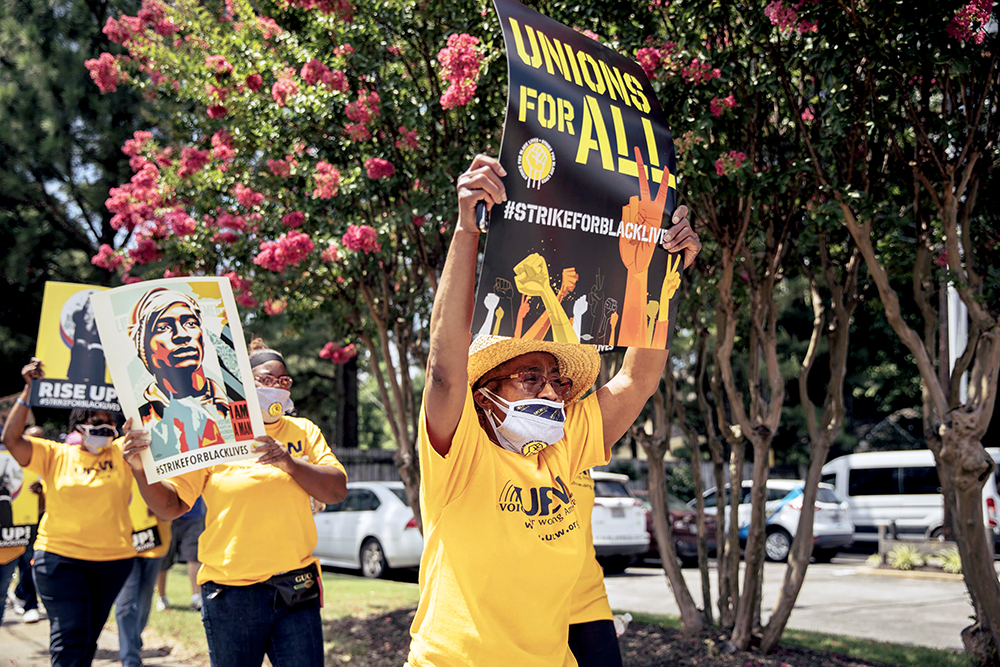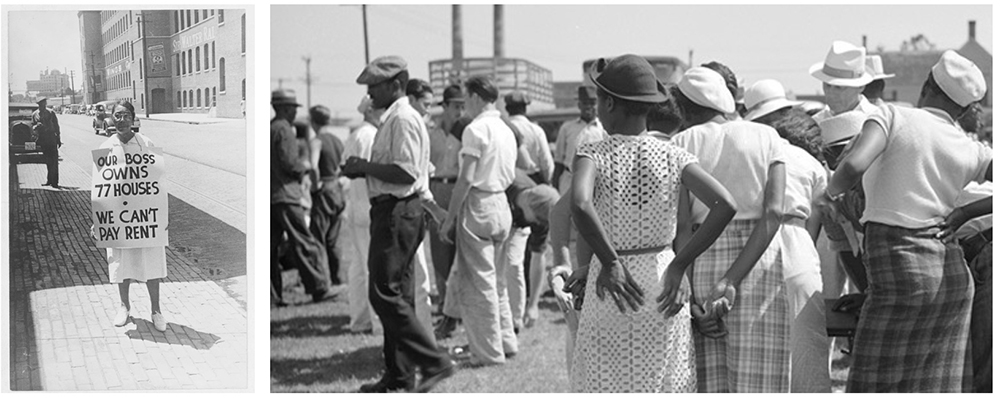Shelby County’s first Democratic district attorney in decades, Steve Mulroy, recently crossed the 100-day mark of being in office, following a campaign that promised to bring progress and change to the criminal justice system.
On the campaign trail, Mulroy prioritized tackling violent crime and reforming the cash bail system, among other efforts to restore public trust in the criminal justice system.
In the days after the campaign, MLK50 talked to people who supported Mulroy and asked them what they wanted to see the new DA accomplish while in office. So far, Mulroy has delivered on many of their priorities, including increased hiring and expanded diversity in the DA’s office, while launching the Justice Review Unit and revamping the Economic Crimes Unit.
The path to plant seeds for reform hasn’t been a smooth one. Just as Mulroy took office on Aug. 31, two high-profile incidents shook Memphis: the kidnapping, assault and death of Eliza Fletcher and the livestreamed fatal shooting spree that left several people injured and dead. The city and the new progressive DA were catapulted into the spotlight, along with questions around how to continue to support and push for criminal justice reform in face of violent crime.
Still, Mulroy seemed to remain firm in his commitment to reform the criminal justice system while keeping violent crime as his top priority. One case highlighting a stark difference between Mulroy and his predecessor is the recent release of Courtney Anderson, who’d been sentenced to 162 years in prison for multiple counts of theft and forgery, an excessive sentence. After serving 25 years, he was recently released after a Shelby County criminal court judge brought the case to Mulroy’s office. “We never could have set the sentences straight if Amy Weirich was still in office. She was the original prosecutor on the case,” said Judge Paula Skahan.
The People’s Checklist: Shelby County resident’s top priorities for DA Mulroy
- Create more transparency and accountability
- Establish a Conviction Review Unit
- Implement community-centered restorative justice practices
- Decrease transfer of youth to adult courts
- More community involvement and a diverse staff reflective of Shelby County demographics, in the DA’s office
One hundred days isn’t long in an eight-year term – the nation’s longest elected prosecutor term. But Mulroy is taking stock of what he’s done in that time.
So, we’re taking a quick look back at what he’s accomplished so far and revisiting some of the people we talked to see what they think of Mulroy’s promises and actions.
Create more transparency and accountability
In August, Earle Fisher was among those calling for increased transparency from Mulroy. Now, Fisher says, the marked difference between Mulroy and former DA Amy Weirich is his commitment to open and honest public engagement: “[Mulroy is] not running from accountability, and I think this is one of the more fundamental things that you can ask for and demand of people in elected office,” said Fisher, founder of Up the Vote 901 and senior pastor of Abyssinian Missionary Baptist Church in Whitehaven.
While remaining cautiously pragmatic and optimistic, Fisher believes Shelby County residents are still growing accustomed to Mulroy as the new DA and learning about his values and priorities in office.

Tikelia Rucker, political organizer with Memphis for All and a member of the Justice and Safety Alliance, is excited to see Mulroy taking steps to restore trust in the community. Like Fisher, Rucker believes Mulroy’s openness with the Shelby County community is the first step to reform. More representation and transparency are what the community wants to see happen sooner rather than later, she said.
Establish a Conviction Review Unit
The new Justice Review Unit, launched Dec. 1, is one of the newest offices in Tennessee to take a look back at wrongful convictions and sentences, and officer-involved shootings. The Davidson County District Attorney’s Office in Nashville established a Conviction Review Unit in 2017, making it the first and only unit of its kind in Tennessee at the time.
Now, five years later, Memphis follows, but with one major difference — an additional review of wrongful sentences (Nashville’s office only reviews convictions), which will be a high-focus area for the JRU, Mulroy said. Also, the Economic Crimes Unit, revamped and launched Nov. 4, will focus on worker exploitation, an issue Mulroy says is rampant in Shelby County.
Rucker considers the new Justice Review Unit a major accomplishment so soon in the DA’s term. Still, she’s also critical of how information about the unit and its application process will be regularly shared inside prisons. The JRU application is available online and by mail only to incarcerated people and their attorneys.Some prisons don’t have internet access or may encounter issues receiving mail.
William Arnold served on Mulroy’s transition team and was a member of the Justice Review Unit working group. Mulroy’s commitment to establishing the JRU shows it wasn’t “just a campaign promise, but a piece of hope,” said Arnold, a formerly incarcerated person who was exonerated in 2021 after a wrongful conviction in Nashville.
Arnold wants to see Mulroy continue to enlist the voices, opinions and actions of regular people in the community while taking an objective, humane and case-by-case approach to prosecution.
“In Tennessee and in a lot of Southern states, we have politicians who say they’re tough on crime, but they’re really tough on people,” Arnold said. “Take into consideration that a person’s sentence may not match the crime and that locking them up and throwing away the key is not always the answer.”
Implement community-centered restorative justice practices
Fundamentally, Fisher wants to see fewer people being prosecuted and incarcerated for petty crimes that reflect a need for mental health services, educational engagement and other social safety net services. Fisher said that he hopes to see Mulroy take his public service role as DA and prioritize public safety, not increase the heavy hand of law enforcement and incarceration.
Based on Mulroy’s campaign promises and professional background, Fisher believes in Mulroy’s ability to address violent crime comprehensively but knows the change he wants to see will take much longer than 100 days to accomplish.
“Structural change is very rarely implemented immediately,” Fisher said. “They are still adjusting and adapting to what it means to try to be a progressive prosecutor, if there is such a thing.”
The top priorities Rucker wants to see Mulroy approach are decreasing crime, continuing to restore trust and creating different avenues for the community to work with the DA’s office. She hopes to see more partnerships between the DA’s office, law enforcement agencies and city and county leaders that center restorative justice and holistic solutions to violent crime.
“It has to be a collaborative effort in order for us to really, really move the needle,” Rucker said. “It does give a sense of hope like Memphis is moving in the right direction, and that’s what this year has been about: progress. Just baby steps to build and move forward in a progressive manner.”
Decrease transfer of youth to adult courts
While wrongfully incarcerated for seven years, Arnold said he encountered other men who had been inside for years, serving decades-long life sentences for crimes they committed years ago in their youth. In Shelby County, there’s a regular pattern of transferring youth to adult court, a practice so common that data show Shelby County transfers more children – primarily Black children – than any other county in Tennessee.
Arnold hopes Mulroy changes this and, instead, approaches each juvenile crime on a case-by-case basis, looking at the root causes of crime and offering diversion programs in the form of job training and educational opportunities.
“What else can we do versus locking them away and allowing them to develop in that horrible place,” Arnold said, “because you’re not going to get anything good from it.”
Mulroy says he remains committed to decreasing the number of youth transferred to adult court and plans to partner with the newly elected Juvenile Court Judge Tarik Sugarmon to implement more restorative justice and early intervention practices among juvenile defendants.
More community involvement and a diverse staff reflective of Shelby County demographics in the DA’s office

Mulroy’s focus during the first few months in office has been on hiring for the understaffed team he inherited. Of all new staff hires, 50% are people of color, compared to 30% people of color in the previous administration’s staff makeup, and 40% of newly hired attorneys are people of color, compared to the previous 15%, Mulroy told MLK50.
“You want [staff] to have cultural competence and a real understanding, both of the defendants and the victims, in order to make good decisions,” Mulroy said. “But it’s also just as important as a matter of public trust.”
At just a few months into his eight-year tenure, Mulroy said he’s pleasantly surprised at how open and welcoming the DA’s office staff is to change under his leadership.
In addition to hiring more staff and increasing staff diversity, one of Mulroy’s first action items as DA was to issue instructions to his staff to deprioritize prosecuting marijuana possession — which disproportionately affects Black men — and reprioritize prosecuting non-fatal shootings in efforts to address violent crime. Mulroy said he took these steps in an effort to restore public trust in the fairness of the criminal justice system.
“We need to restore public confidence so we can get the community cooperating with law enforcement — providing tips, reporting crimes, serving as witnesses,” Mulroy said. “That really is the only way we’re going to bend the curve on violent crime.”
The coming years of Mulroy’s tenure as DA will be marked by reform through continuously hiring diverse staff that can make new decisions and lock in change for years to come, which will, in turn, slowly reshape the criminal justice system.
“A lot of the change that’s occurring right now is happening in a hundred or a thousand different little decisions that are being made by assistant district attorneys. That’s happening gradually, little by little, without much fanfare,” Mulroy said. “I want to hardwire reforms and bake in change that will last beyond my tenure.”
Hardwiring change
Mulroy walks the fine line of being a progressive DA while addressing crime in a city that’s experienced an increase in property crime and an increase in major violent crime. At this start of his term, the Eliza Fletcher and Ezekiel Kelly cases — both major violent crimes allegedly committed by formerly incarcerated people released early from prison — struck a dissonant chord between Memphians who believe in reform and those who believe in a “tough on crime” approach.
As DA, Mulroy is committed to being “smart on crime,” as he described it, instituting swift and certain punishment: “For decades, our approach to violent crime [has been] to lock more people up and to lock them up for longer. It’s demonstrably not working.” The metrics for progress, Mulroy said, will reflect not in the conviction rate or the years of sentences, but in the rate of recidivism, or “criminal acts that result in rearrest, reconviction or a return to prison,” according to the National Institute of Justice.
Now, the DA is focused on answering the question, how do you hardwire change? Aside from focusing on reforms that can be implemented quickly, Mulroy’s long-term focus is structural change, like expanding restorative justice opportunities. Deep change like this takes time, funding and resources, Mulroy said.
Mulroy plans to hire staff who will be devoted to animal abuse and neglect cases. He also plans to hire a staff member who can coordinate the different treatment programs and rehabilitative services, like drug and mental health court, so they can be incorporated into plea offers.
“This [public office] is the one that has the greatest potential for making a difference. Because the DA has such broad discretion, one person can just really completely change the direction of the criminal justice system — not overnight, but certainly within eight years,” Mulroy said.


